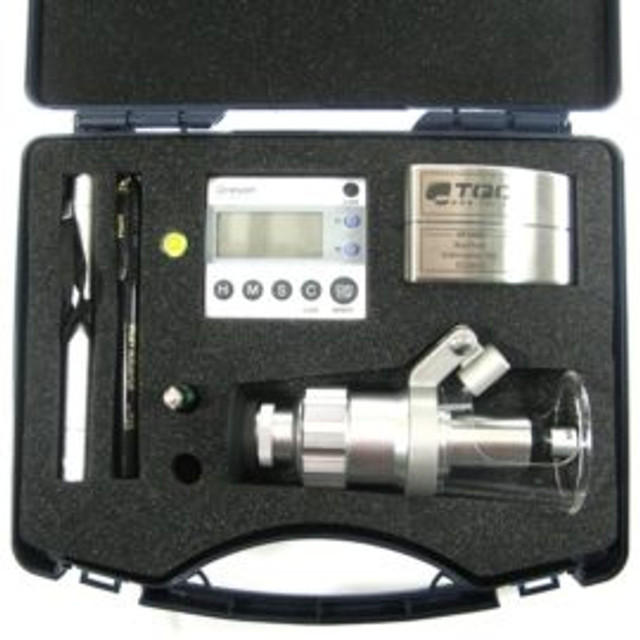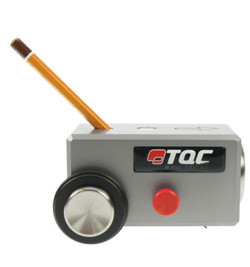Product Description
The TQC Buchholz Hardness Indentation Test provides a method for carrying out an indentation test on coatings complying with the ISO 2815-2003 standard. The TQC Buchholz Hardness Indentation Test consists of a calibrated slip-on weight with a sharp-edged metal wheel, an illuminated microscope, a level gauge, a digital dual timer, and two markers with the template.
Testing Principle
In the Buchholz indentation hardness test a test body of specified geometry acts for a prescribed time on the specimen using a defined test load. After a specified recovery time, the length (l) of the resulting indentation is measured using the microscope. Based on this length of impression (l) in mm, it is possible to calculate:
- Buchholz indentation hardness = 100/l (1)
- Depth of impression (µm, approx.) = 8 x l² (2)
Both variables are rounded up to whole numbers.
Application Range
The Buchholz impression hardness test is applicable whenever the following marginal conditions are fulfilled:
- The coating to be tested must be even and smooth with a clean surface and applied to a level substrate that will resist the test force.
- There must be an adequate coating thickness (i.e. to exceed the depth of impression acc. to (1) above by at least 10 µm).
- For comparison testing the specimens should have the same coating thickness; and the conditioning and testing of the specimens should be conducted under identical ambient conditions.
Since the impression test causes only insignificant damage to the coating, testing is also possible on finished products.
The Buchholz Hardness Indentation Test is a mandatory test in Qualicoat, QIB and GSB accredited laboratories.



 my account
my account 

 PRODUCT DATA SHEET
PRODUCT DATA SHEET




